Researchers have long studied magnetotactic bacteria (MTB), aquatic microbes that have the ability to orientate themselves to magnetic fields. This unusual behaviour makes them a subject of interest for improving our understanding of biomagnetism, and potentially harnessing their abilities for future technologies, such as medical nanorobots. Neutrons have been used to explore the characteristics of this magnetism by probing the specialised parts of the cells that are involved.
MTBs exert their magnetic navigation skills using magnetosomes – membrane structures containing magnetic nanoparticles that the bacteria mineralise from their environment. The magnetosomes arrange in a chain that acts like a magnetic compass, allowing the bacteria to move toward the riverbeds they inhabit, using the Earth’s magnetic fields. These unusual nanoparticles have been examined with neutron beams to discover the underlying mechanisms that determine the arrangement and geometry of the chains.
An international collaboration of researchers from University of the Basque Countries, University of Cantabria and the Institut Laue Langevin (ILL) have elucidated the precise structural configuration of the magnetosomes in the MTB strain Magnetospirillum gryphiswaldense. They carried out small-angle neutron scattering (SANS) on a colloid of MTB, a technique that allows them to see the magnetic microstructure of the organisms in detail in aqueous solution. The D33 instrument was employed because of its polarised neutron beam mode, which allowed the researchers to analyse both the structural components and magnetic arrangement – possible because neutrons will interact with both. Magnetic nanoparticles are central to many applications, ranging from biomedical diagnostics to data storage, and even hyperthermia cancer treatments, but the magnetic structures within and in between nanoparticles are challenging to probe directly. Neutron-spin resolved small-angle neutron scattering is one of the few tools that can be used to investigate nanoparticles.
Using SANS, the researchers have gained new insight into the structure of the magnetosome chain.
Image Credit: CC0 Public Domain
News This Week
Johns Hopkins Researchers Uncover a New Way To Kill Cancer Cells
A new study reveals that blocking ribosomal RNA production rewires cancer cell behavior and could help treat genetically unstable tumors. Researchers at the Johns Hopkins Kimmel Cancer Center and the Department of Radiation Oncology and Molecular [...]
AI matches doctors in mapping lung tumors for radiation therapy
In radiation therapy, precision can save lives. Oncologists must carefully map the size and location of a tumor before delivering high-dose radiation to destroy cancer cells while sparing healthy tissue. But this process, called [...]
Scientists Finally “See” Key Protein That Controls Inflammation
Researchers used advanced microscopy to uncover important protein structures. For the first time, two important protein structures in the human body are being visualized, thanks in part to cutting-edge technology at the University of [...]
AI tool detects 9 types of dementia from a single brain scan
Mayo Clinic researchers have developed a new artificial intelligence (AI) tool that helps clinicians identify brain activity patterns linked to nine types of dementia, including Alzheimer's disease, using a single, widely available scan—a transformative [...]
Is plastic packaging putting more than just food on your plate?
New research reveals that common food packaging and utensils can shed microscopic plastics into our food, prompting urgent calls for stricter testing and updated regulations to protect public health. Beyond microplastics: The analysis intentionally [...]
Aging Spreads Through the Bloodstream
Summary: New research reveals that aging isn’t just a local cellular process—it can spread throughout the body via the bloodstream. A redox-sensitive protein called ReHMGB1, secreted by senescent cells, was found to trigger aging features [...]
AI and nanomedicine find rare biomarkers for prostrate cancer and atherosclerosis
Imagine a stadium packed with 75,000 fans, all wearing green and white jerseys—except one person in a solid green shirt. Finding that person would be tough. That's how hard it is for scientists to [...]
Are Pesticides Breeding the Next Pandemic? Experts Warn of Fungal Superbugs
Fungicides used in agriculture have been linked to an increase in resistance to antifungal drugs in both humans and animals. Fungal infections are on the rise, and two UC Davis infectious disease experts, Dr. George Thompson [...]
Scientists Crack the 500-Million-Year-Old Code That Controls Your Immune System
A collaborative team from Penn Medicine and Penn Engineering has uncovered the mathematical principles behind a 500-million-year-old protein network that determines whether foreign materials are recognized as friend or foe. How does your body [...]
Team discovers how tiny parts of cells stay organized, new insights for blocking cancer growth
A team of international researchers led by scientists at City of Hope provides the most thorough account yet of an elusive target for cancer treatment. Published in Science Advances, the study suggests a complex signaling [...]
Nanomaterials in Ophthalmology: A Review
Eye diseases are becoming more common. In 2020, over 250 million people had mild vision problems, and 295 million experienced moderate to severe ocular conditions. In response, researchers are turning to nanotechnology and nanomaterials—tools that are transforming [...]
Natural Plant Extract Removes up to 90% of Microplastics From Water
Researchers found that natural polymers derived from okra and fenugreek are highly effective at removing microplastics from water. The same sticky substances that make okra slimy and give fenugreek its gel-like texture could help [...]
Instant coffee may damage your eyes, genetic study finds
A new genetic study shows that just one extra cup of instant coffee a day could significantly increase your risk of developing dry AMD, shedding fresh light on how our daily beverage choices may [...]
Nanoneedle patch offers painless alternative to traditional cancer biopsies
A patch containing tens of millions of microscopic nanoneedles could soon replace traditional biopsies, scientists have found. The patch offers a painless and less invasive alternative for millions of patients worldwide who undergo biopsies [...]
Small antibodies provide broad protection against SARS coronaviruses
Scientists have discovered a unique class of small antibodies that are strongly protective against a wide range of SARS coronaviruses, including SARS-CoV-1 and numerous early and recent SARS-CoV-2 variants. The unique antibodies target an [...]
Controlling This One Molecule Could Halt Alzheimer’s in Its Tracks
New research identifies the immune molecule STING as a driver of brain damage in Alzheimer’s. A new approach to Alzheimer’s disease has led to an exciting discovery that could help stop the devastating cognitive decline [...]









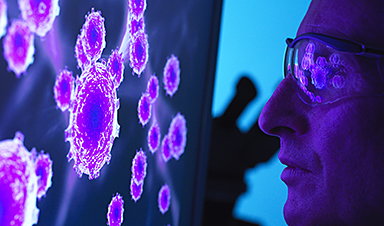
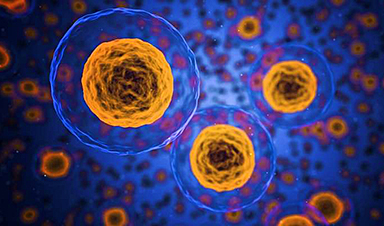
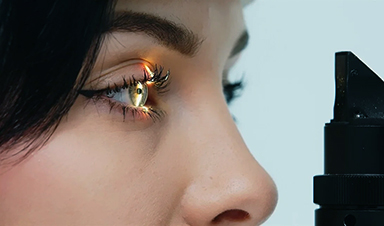


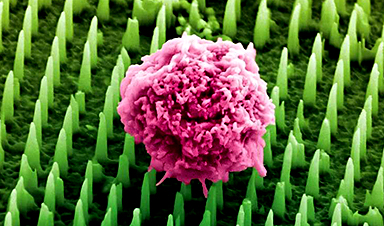
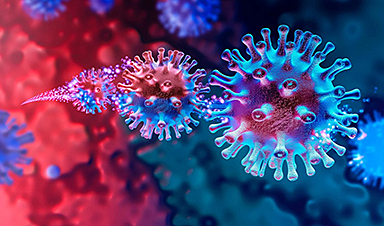


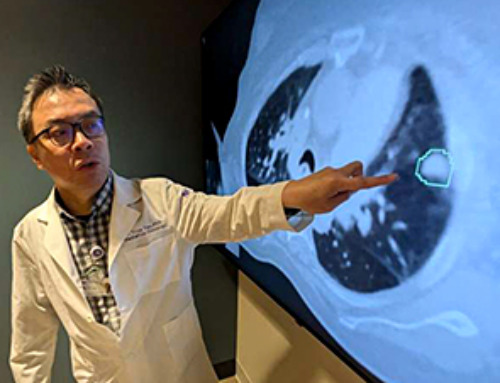
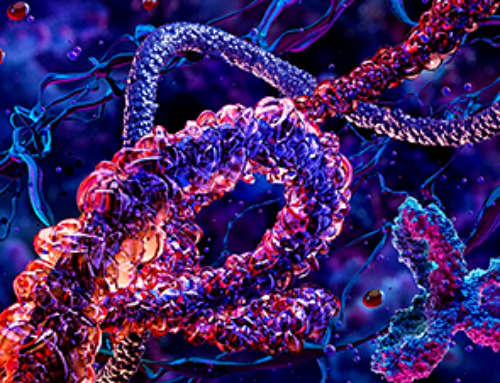
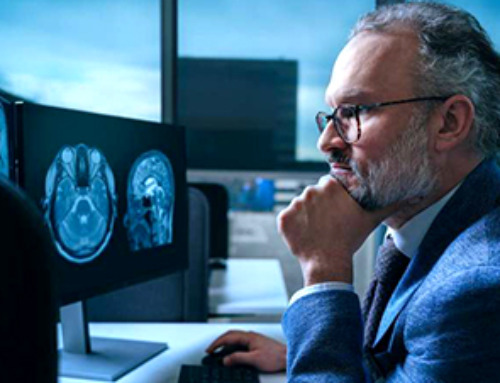

Leave A Comment